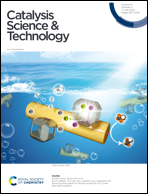Homogeneous vs. heterogeneous: mechanistic insights into iron group metal-catalyzed reductions from poisoning experiments
Abstract
Iron group metal catalysts constitute a promising alternative to well-established noble metal catalysts in reduction reactions. However, the development of effective 3d metal catalysts has largely been hampered by their distinct coordination properties, their higher lability toward ligand exchange, redox reactions, and rapid aggregation to larger particles. The facile transition from homogeneous to heterogeneous catalysts under reducing conditions has been a major challenge in method optimization and mechanistic understanding. While ex situ-analyses of catalyst derivatives can be achieved by various spectroscopic techniques, their results have only limited value for the different conditions, concentrations, and complex kinetics of a real catalytic system. On the other hand, in situ-tools usually require highly sophisticated setups aiming at the detection of fleeting intermediates. This review advocates the use of kinetic poisoning experiments which can be easily performed in a standard laboratory and enable the distinction between homotopic and heterotopic catalysis mechanisms.



 Please wait while we load your content...
Please wait while we load your content...